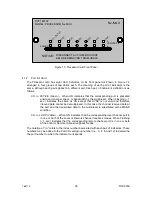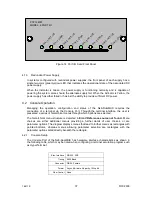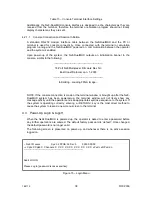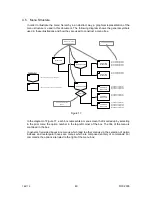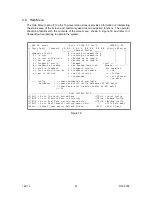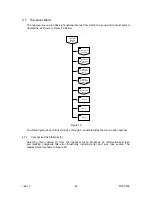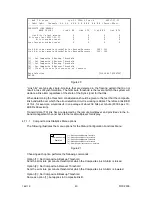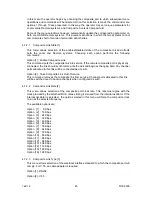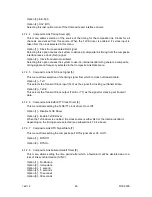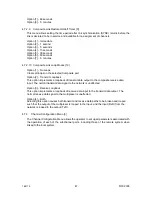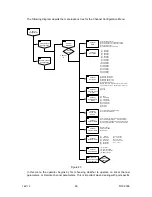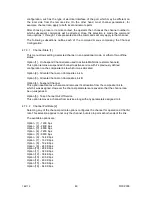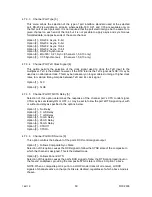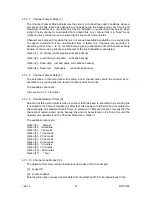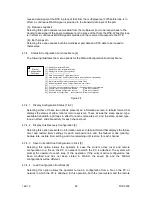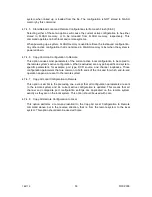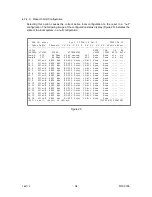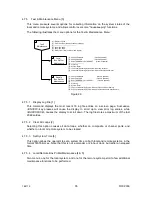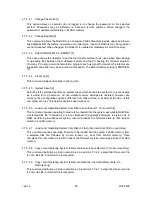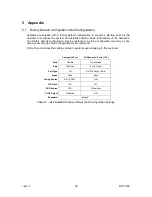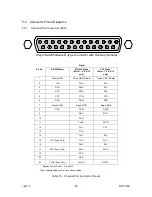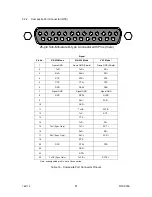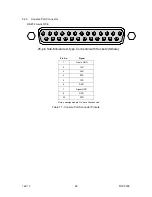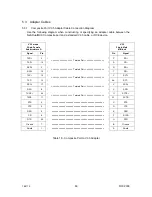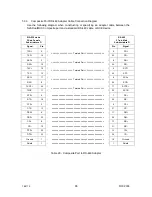
166119
8/31/2006
50
4.7.3.3 Channel Port Type [3]
This menu allows the selection of the type of port interface standard used at the selected
port. RS-232 is available on all ports, whereas EIA-530, X.21 and V.35 are available only on
the first port of each port card. It is not required that the port electrical type be the same for a
given channel on each end of the link, but it is not possible to apply async and synchronous
formatted data on opposite ends of the same channel.
Option [1] - RS-232, Async, 8-bit
Option [2] - RS-232, Async, 9-bit
Option [3] - RS-232, Async, 10-bit
Option [4] - RS-232, Async, 11-bit
Option [5] - RS-232 Synchronous
Option [6] - EIA-530 / X.21, Sync (Channels 1,5,9,13 only)
Option [7] - V.35 Synchronous (Channels 1,5,9,13 only)
4.7.3.4 Channel Port TxD Clock Signal [4]
This option permits the selection of the clock signal used to clock the TxD input to the
multiplexer. TxC is the default, however, if the DTE returns the TxC signal as TxCE, it may be
used as an alternative clock. This may be necessary on longer cables running at higher clock
rates, to maintain timing margins between TxD and it‟s clock signal.
Option [1] - TxC
Option [2] - TxCE
4.7.3.5 Channel Port RTS/CTS Delay [5]
Selection of this option determines the response of the channel port‟s CTS control signal.
CTS may be set steadily ON or OFF, or, may be set to follow the port‟s RTS signal input, with
or without a delay as specified in the options below.
Option [1] - No Delay
Option [2] - 3 mS Delay
Option [3] - 7 mS Delay
Option [4] - 13 mS Delay
Option [5] - 26 mS Delay
Option [6] - 53 mS Delay
Option [7] - CTS Off
Option [8] - CTS On
4.7.3.6 Channel Port DCD Source [6]
This option controls the behavior of the port‟s DCD control signal output.
Option [1] - Follows Composite Sync State
Selection of this option causes the DCD signal to follow the SYNC state of the composite to
which the channel is assigned. This is the default mode
Option [2] - Follows Far-end RTS
Selection of this option causes the port‟s DCD signal to follow the RTS control lead input on
the far-end multiplexer, providing the composite SYNC state is ON as in Option 1 above.
NOTE: When a composite port is put into a LOOP mode (transmit or receive), all DCD
signals of channels active on that port‟s link are disabled, regardless of which above mode is
chosen.
Summary of Contents for Nx8- Dual Composite MUX High-Speed 16-Port TDM Multiplexer
Page 2: ......
Page 6: ...166119 8 31 2006 2...
Page 32: ...166119 8 31 2006 28...
Page 38: ...166119 8 31 2006 34...
Page 61: ...166119 8 31 2006 57...
Page 62: ...166119 8 31 2006 58...

